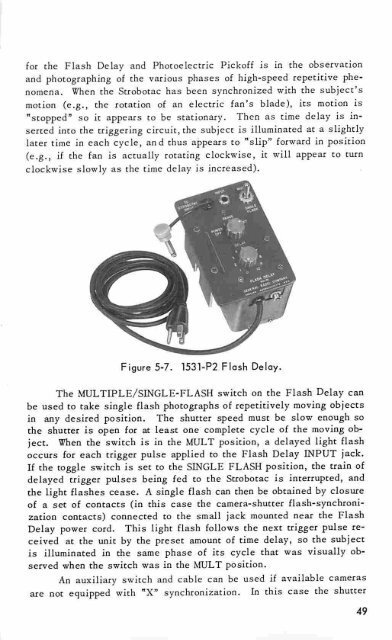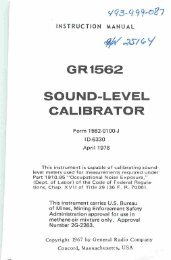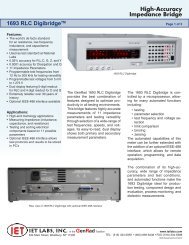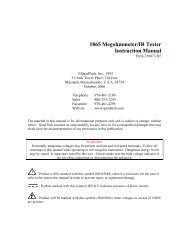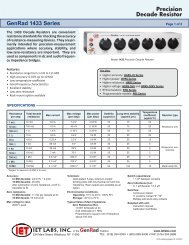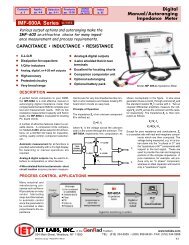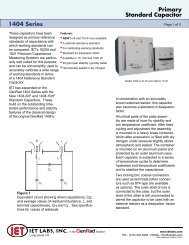Handbook of High Speed Photography - IET Labs, Inc.
Handbook of High Speed Photography - IET Labs, Inc.
Handbook of High Speed Photography - IET Labs, Inc.
You also want an ePaper? Increase the reach of your titles
YUMPU automatically turns print PDFs into web optimized ePapers that Google loves.
for the Flash Delay and Photoelectric Pick<strong>of</strong>f is in the observation<br />
and photographing <strong>of</strong> the various phases <strong>of</strong> high-speed repetitive phe<br />
nomena. When the Strobotac has been synchronized with the subject's<br />
motion (e.g., the rotation <strong>of</strong> an electric fan's blade), its motion is<br />
"stopped" so it appears to be stationary. Then as time delay is in<br />
serted into the triggering circuit, the subject is illuminated at a slightly<br />
later time in each cycle, and thus appears to "slip" forward in position<br />
(e.g., if the fan is actually rotating clockwise, it will appear to turn<br />
clockwise slowly as the time delay is increased).<br />
Figure 5-7.<br />
1531-P2 Flash Delay.<br />
The MULTIPLE/SINGLE-FLASH switch on the Flash Delay can<br />
be used to take single flash photographs <strong>of</strong> repetitively moving objects<br />
in any desired position. The shutter speed must be slow enough so<br />
the shutter is open for at least one complete cycle <strong>of</strong> the moving ob<br />
ject. When the switch is in the MULT position, a delayed light flash<br />
occurs for each trigger pulse applied to the Flash Delay INPUT jack.<br />
If the toggle switch is set to the SINGLE FLASH position, the train <strong>of</strong><br />
delayed trigger pulses being fed to the Strobotac is interrupted, and<br />
the light flashes cease. A single flash can then be obtained by closure<br />
<strong>of</strong> a set <strong>of</strong> contacts (in this case the camera-shutter flash-synchroni<br />
zation contacts) connected to the small jack mounted near the Flash<br />
Delay power cord. This light flash follows the next trigger pulse re<br />
ceived at the unit by the preset amount <strong>of</strong> time delay, so the subject<br />
is illuminated in the same phase <strong>of</strong> its cycle that was visually ob<br />
served when the switch was in the MULT position.<br />
An auxiliary switch and cable can be used if available cameras<br />
are not equipped with "X" synchronization. In this case the shutter<br />
49


